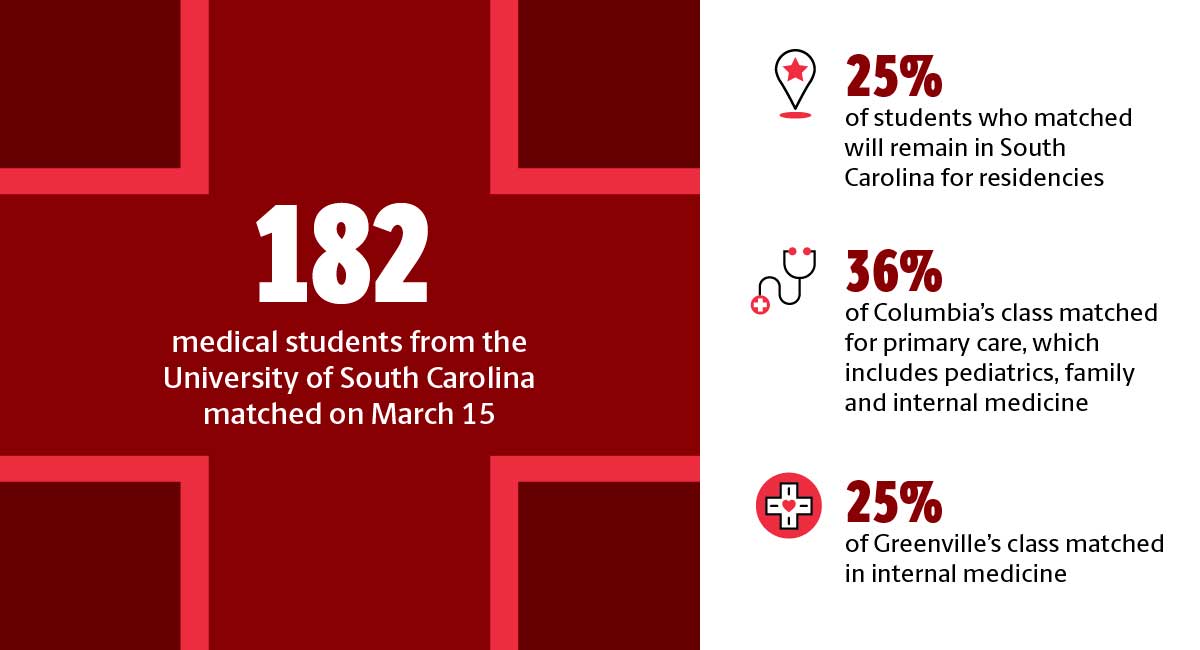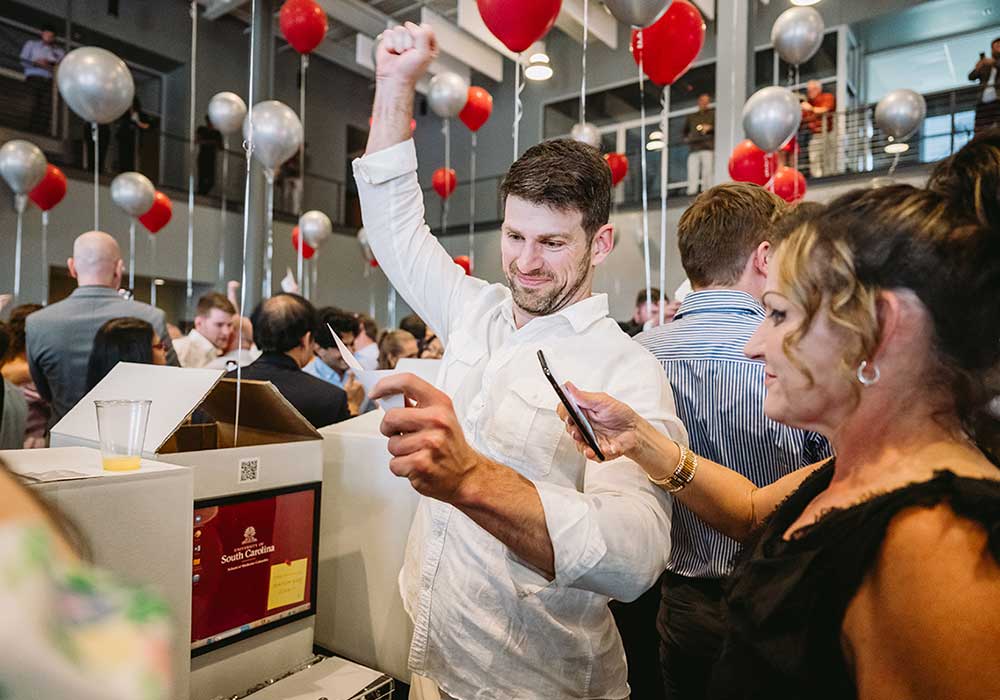More than 200 Gamecocks learned where they’ll work as resident pharmacists and physicians during national Match Day events on March 13 and 15. Pharmacy students found out their matches through a virtual celebration, while medical students from Columbia and Greenville celebrated in-person, sharing their excitement in real-time with faculty, friends and family.
How it works
During their final year, medical and pharmacy students complete applications, essays and interviews with residency programs across the country, ranking their top choices. The National Resident Matching Program algorithm matches medical students and programs based on these mutual rankings.
Pharmacy students can pursue postgraduate training with a variety of institutions including executive residencies, fellowships or independent programs. Most are matched through the American Society of Health-System Pharmacists Resident Matching Program.
Getting matched
The majority of pharmacy and medical students across the country find out where they will continue their clinical training or residency after graduation on Match Day. The military has its own match with earlier deadlines, so military students secure a position and find out earlier, as do medical students who are interested in ophthalmology or urology. Pharmacy students can match during multiple phases.
By the numbers
This year, Gamecock residents will head to more than 30 states to deliver care and continue their training. In total, 182 medical students from the university’s Columbia and Greenville medical schools matched on March 15.
Forty-seven pharmacy students matched during phase one or accepted industry fellowships and executive residencies. The College of Pharmacy had the highest postgraduate year one match rate in the state, exceeding the national average. Additionally, 14 pharmacy alumni matched to year two residencies to further their specialization.

Why it matters
The University of South Carolina graduates more health care workers than any other institution in the state. Twenty five percent of medical students who matched in 2024 will remain in South Carolina for residencies at Prisma Health Midlands and Upstate, MUSC, Self Regional Healthcare, Lexington Medical Center, Winnsboro, Spartanburg, Grand Strand and McLeod.
Twenty percent of pharmacy students will also remain in South Carolina, specializing in areas such as acute care, community pharmacy, emergency medicine and infectious diseases.
According to the National Resident Matching Program, concerns remain about a shortage of primary care physicians across the U.S. Both medical schools showed promise in this area. A total of 36 percent of Columbia’s class matched in primary care, which includes pediatrics and family and internal medicine, while 25 percent of Greenville’s class matched with specialization in internal medicine. Pharmacy students showed strength in pediatrics and internal medicine.
“This event was more exciting than anything I could have imagined. I can’t wait to match into family medicine at Florence Regional Medical Center with McLeod.”
